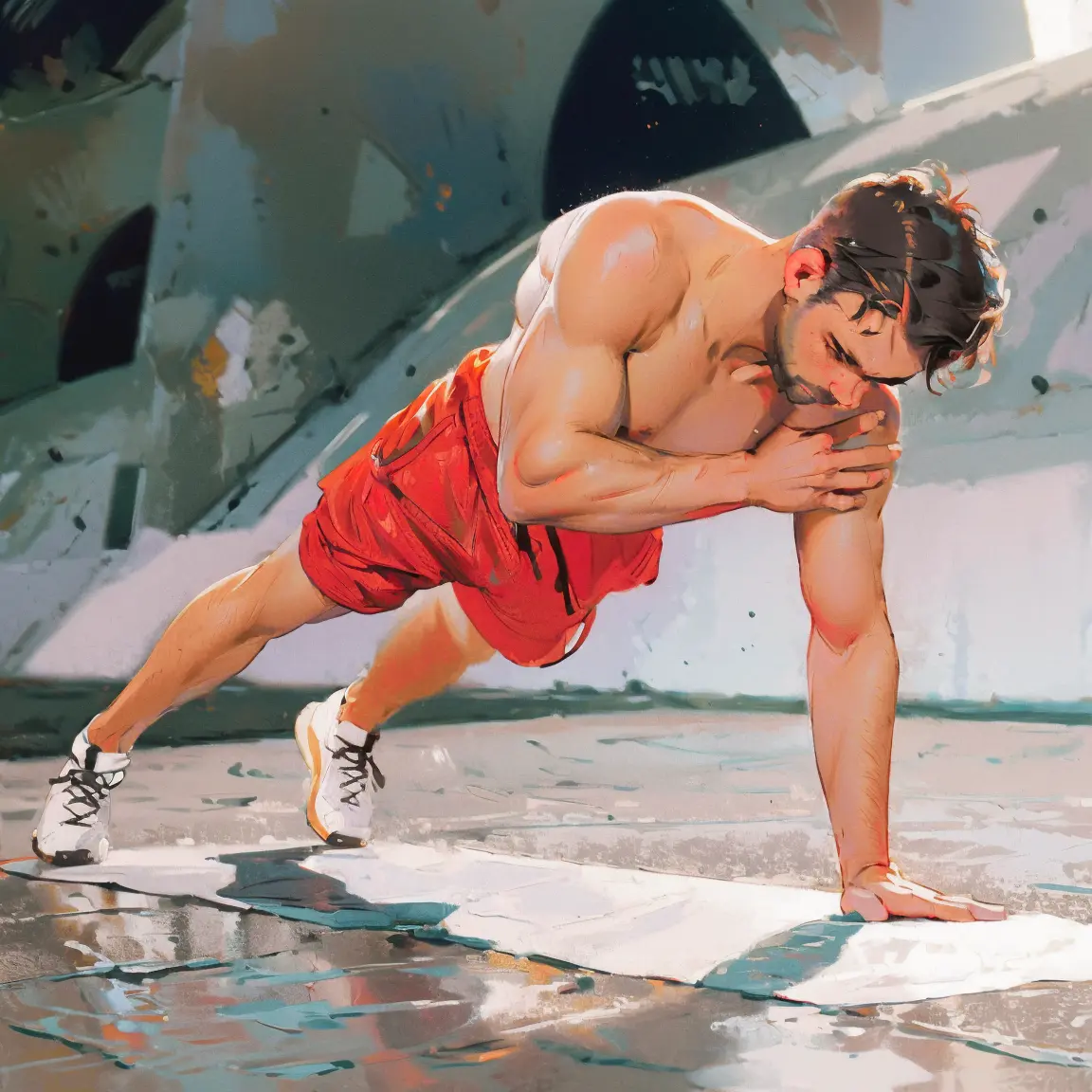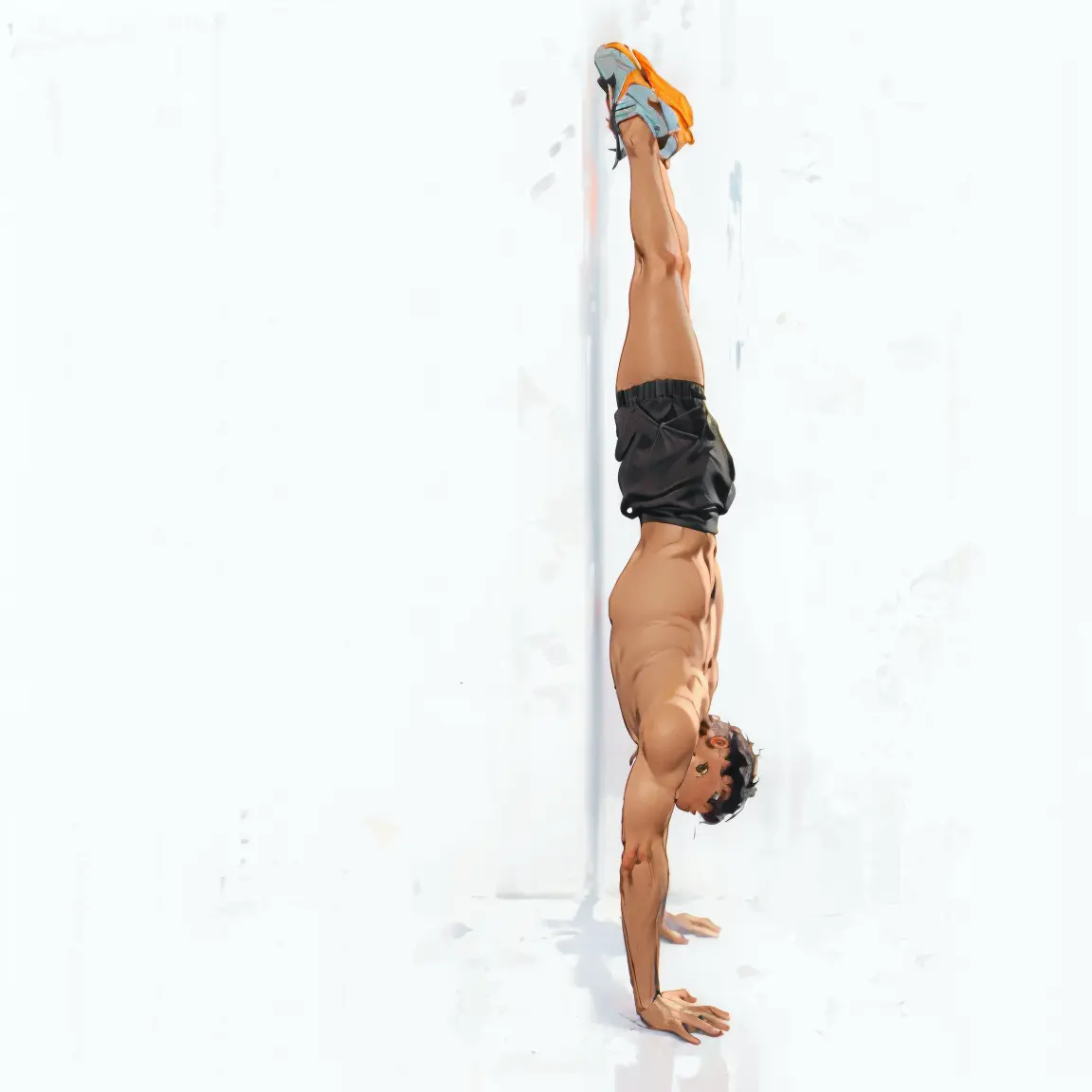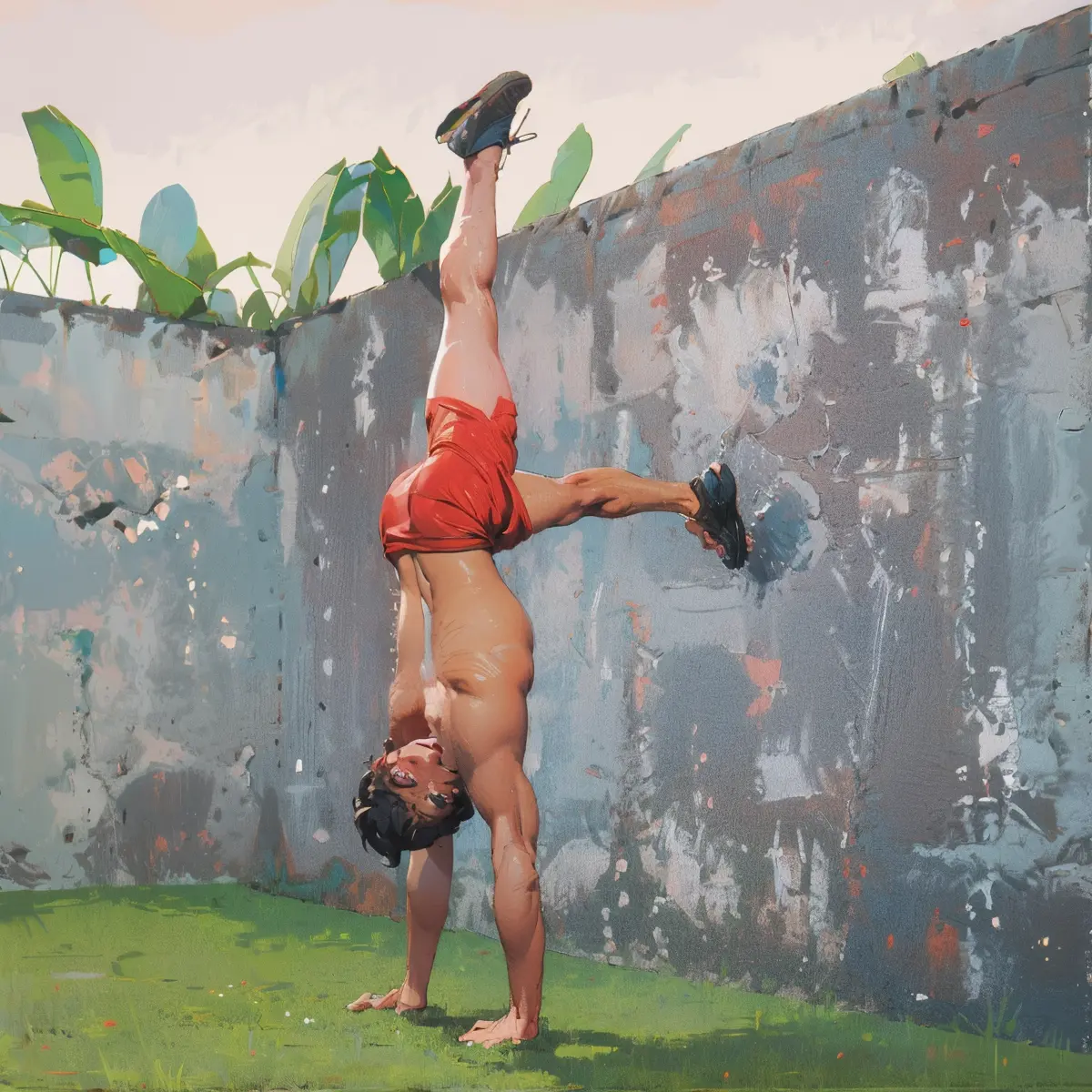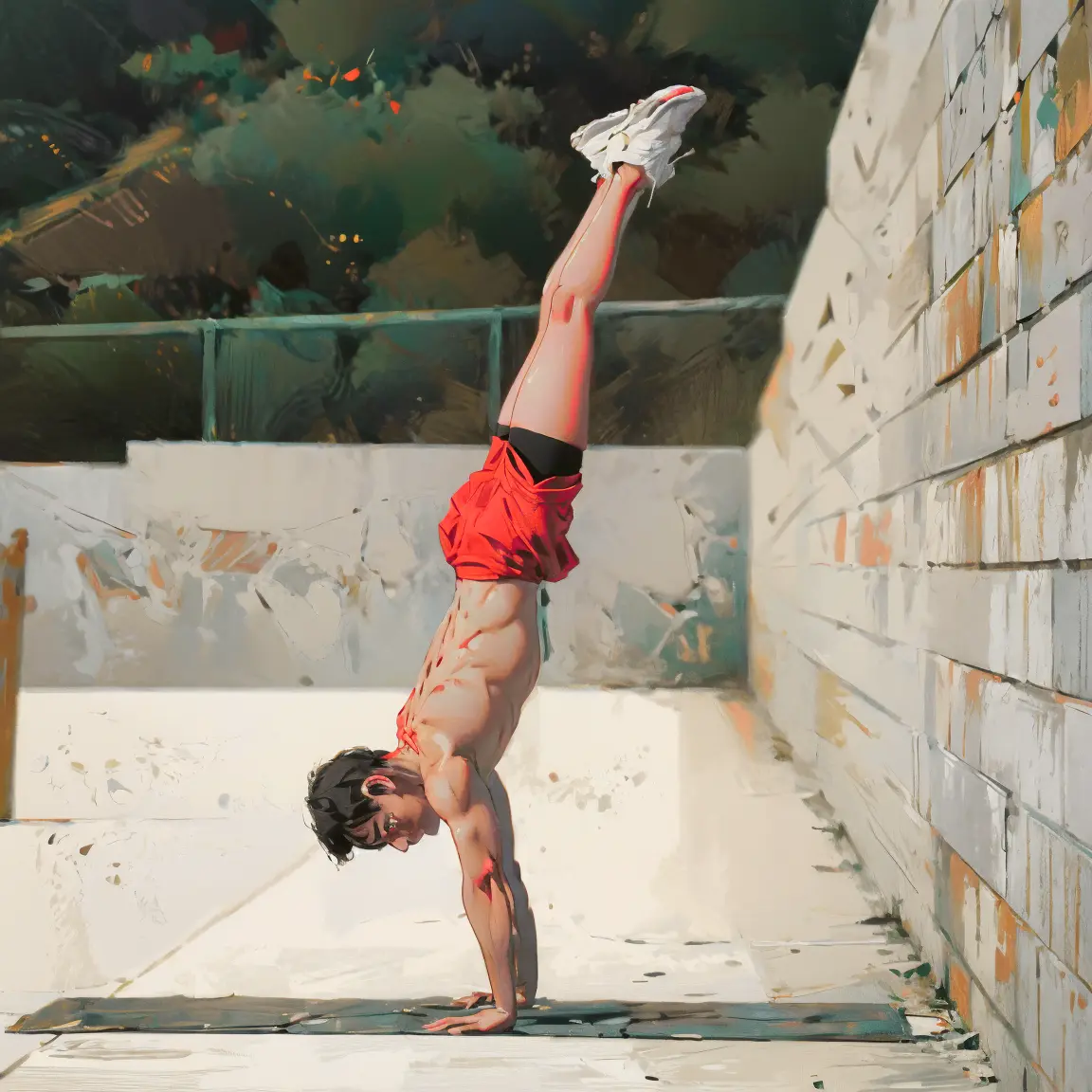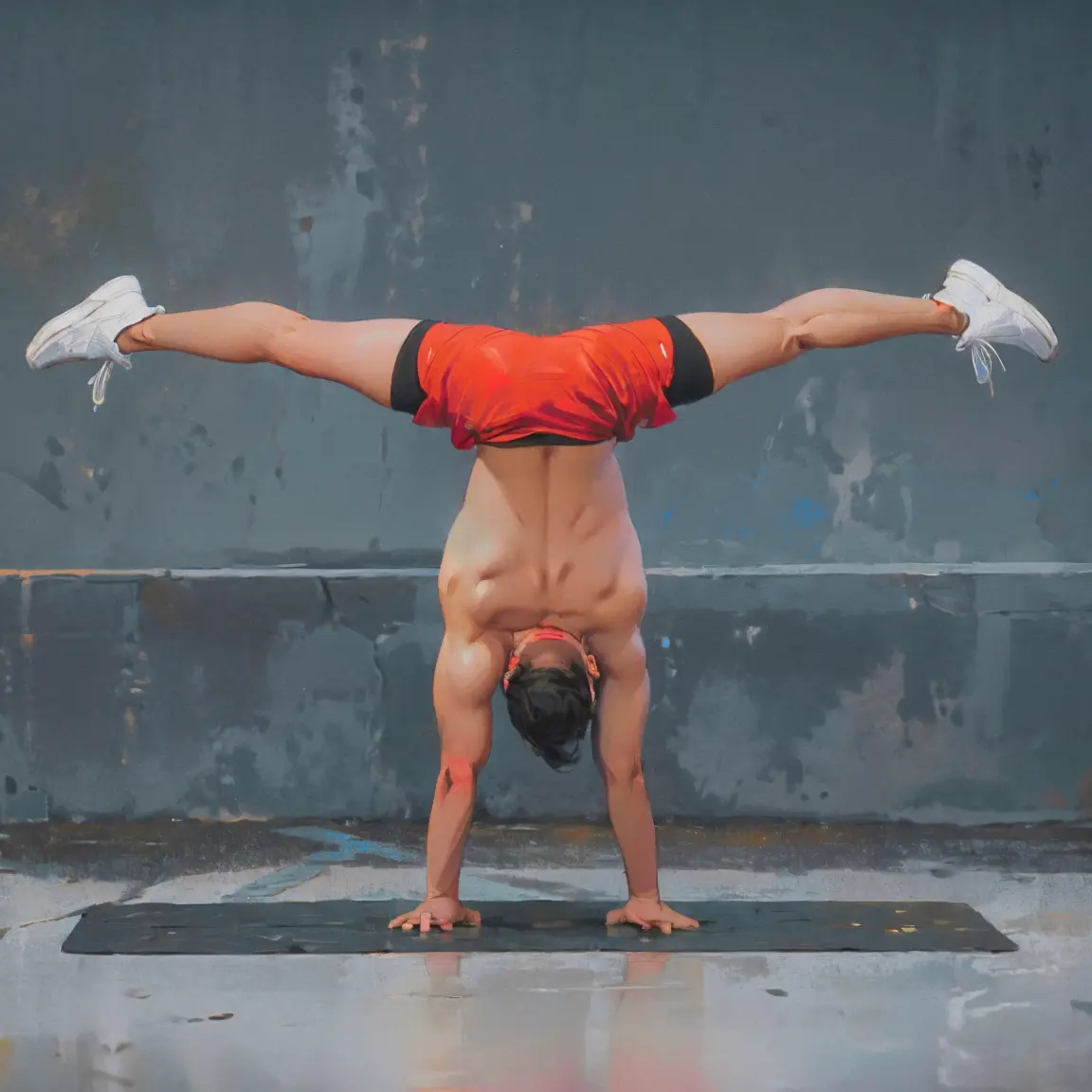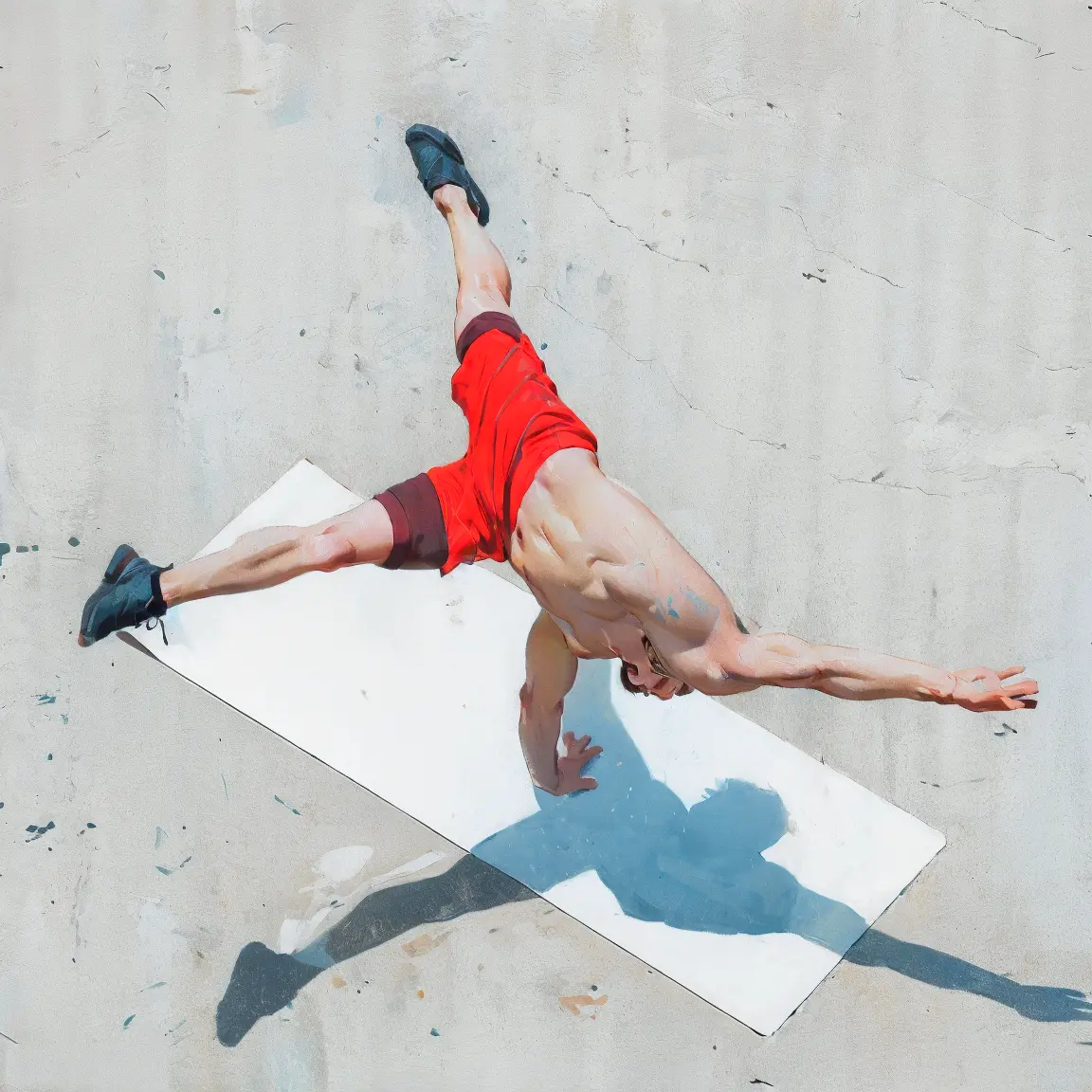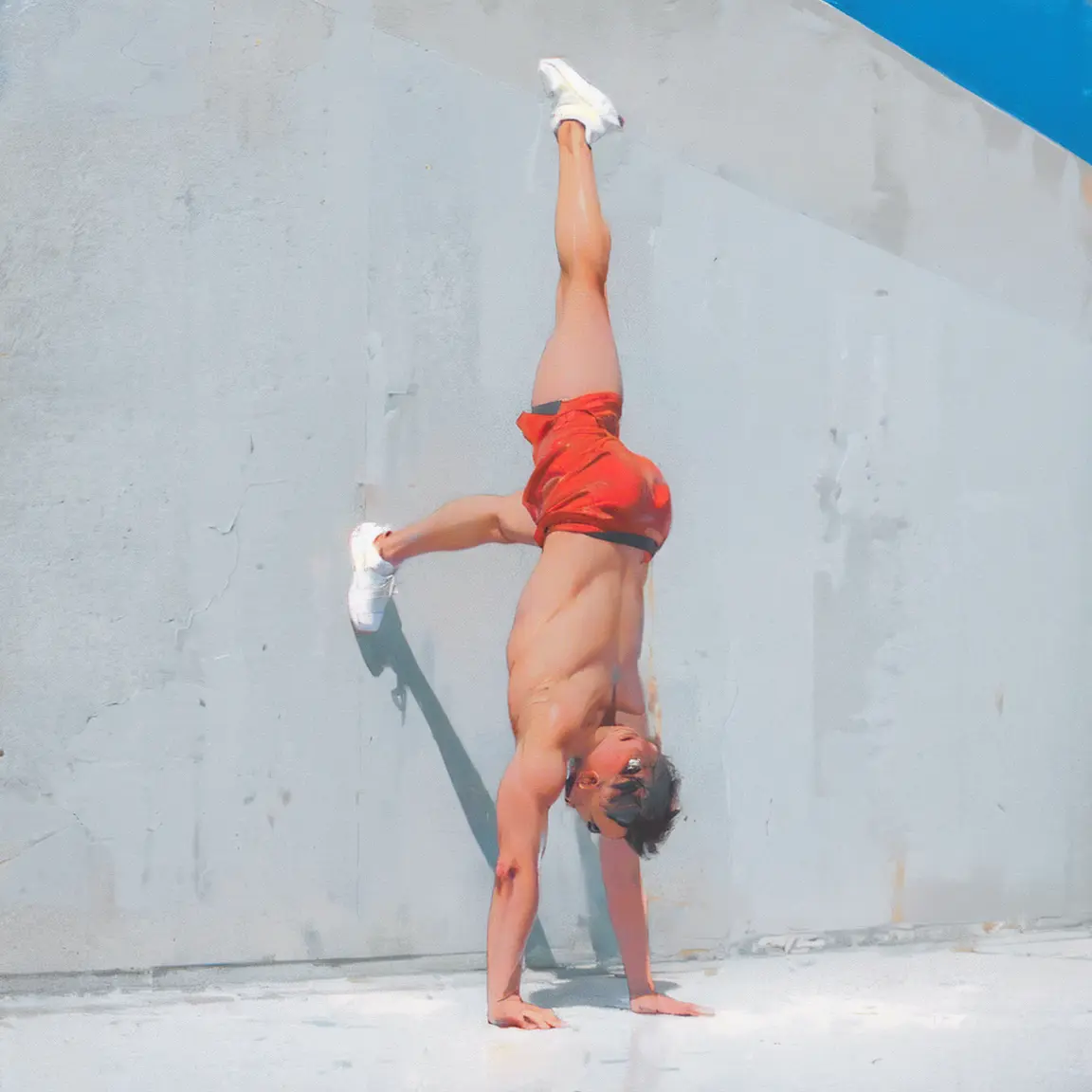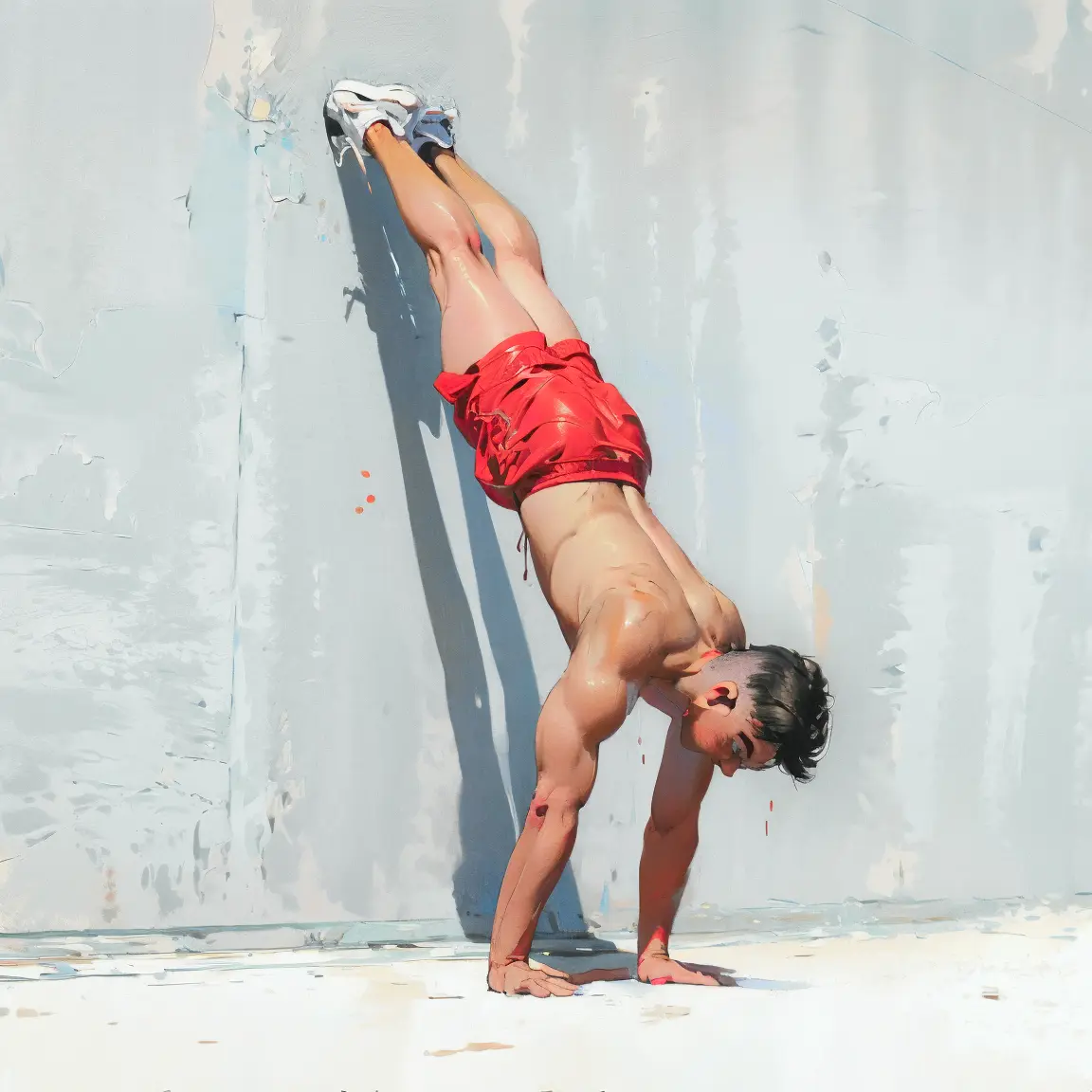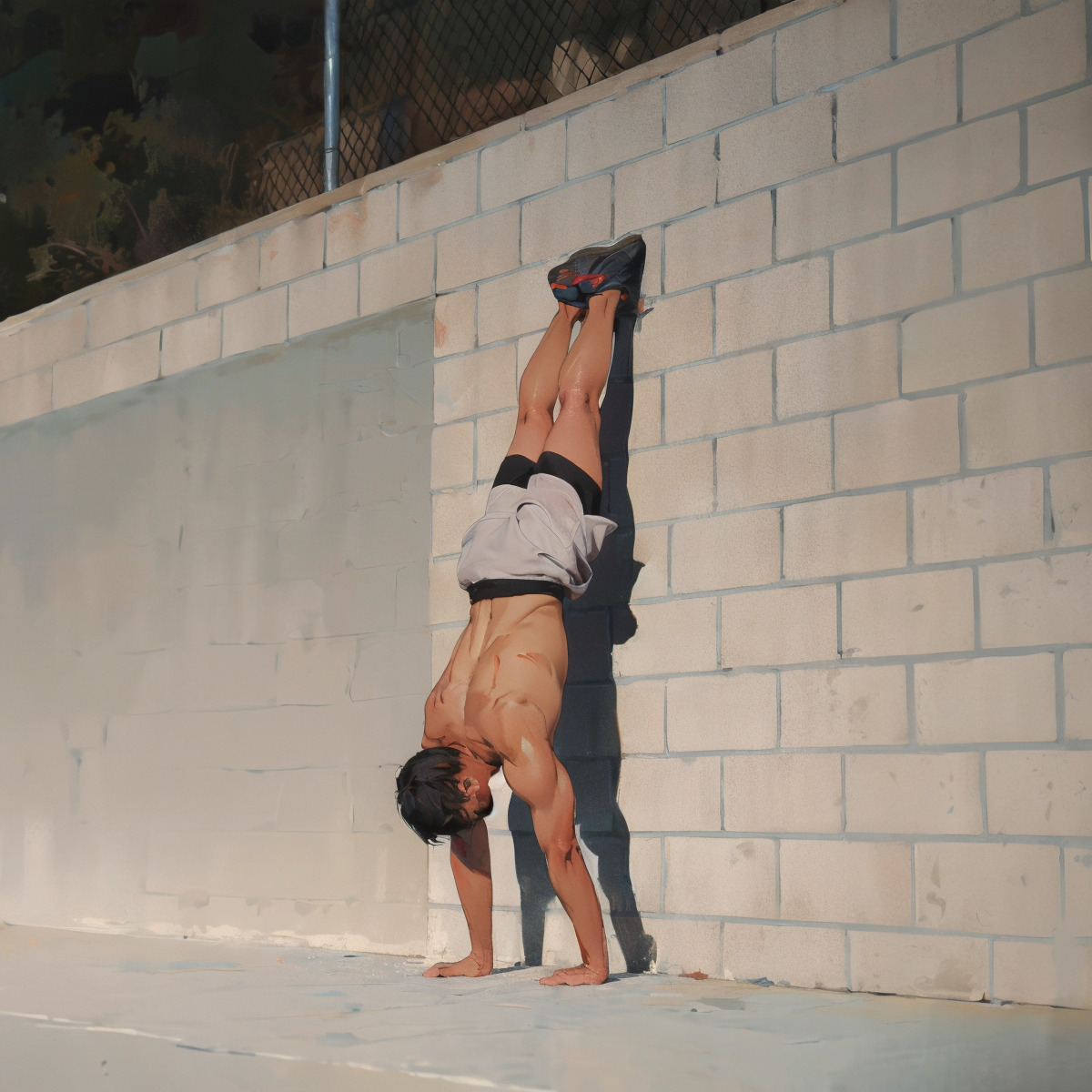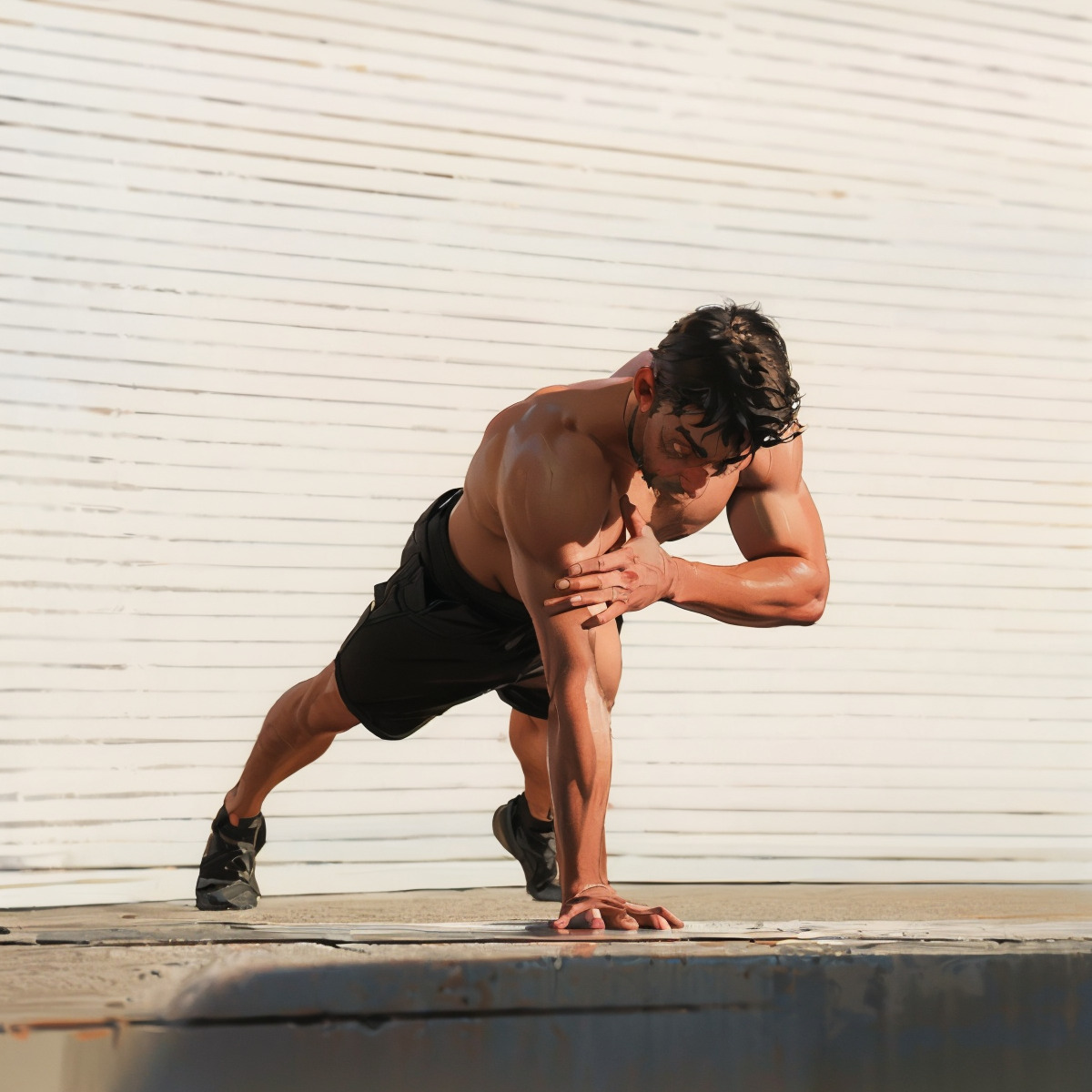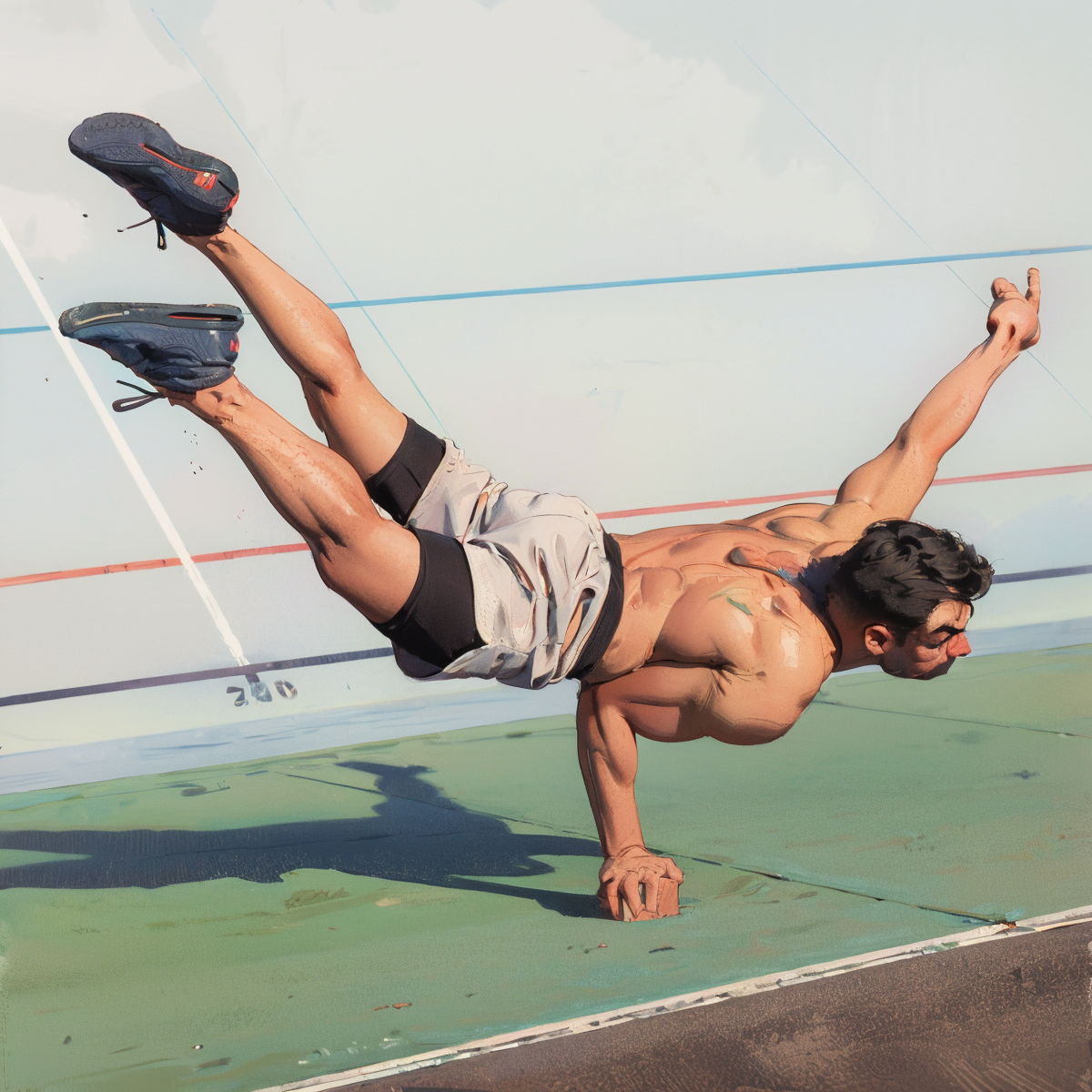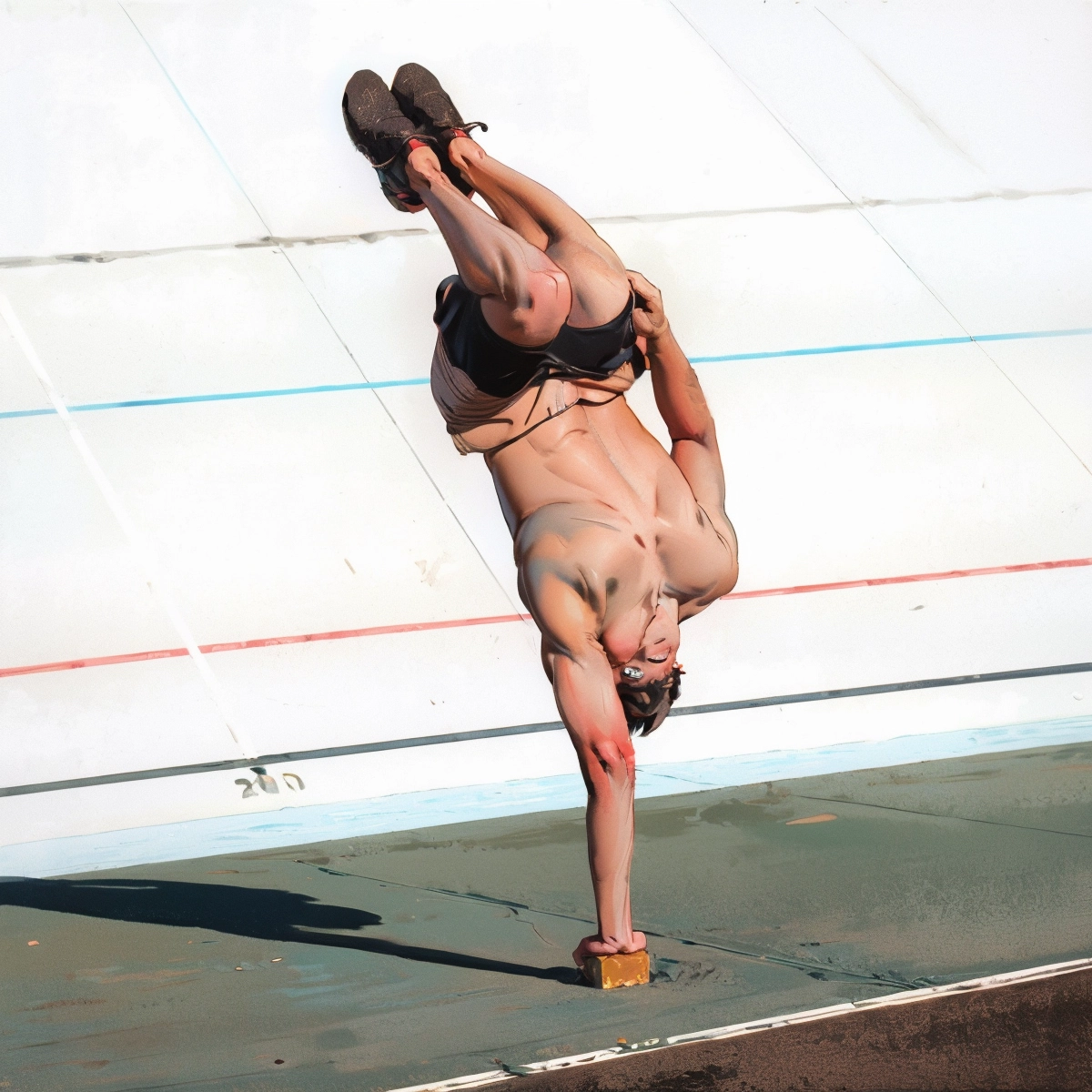Why train handstands
at the wall
The wall is not a regression when it comes to handstand training or a punishment. The wall is an opportunity for continued growth, technical refinements and strength gains. At the wall we get the opportunity to take balance and with that chance out of the equation. We can focus entirely on building strength and alignment. This allows you to get an actual training effect, to consistently overload and over time to build time under tension. If you go to the gym for 15 sets of handstands you will do 15 good sets of handstands. If you were training without the wall 15 sets of handstands on some days will be 12 and other 4.. Or none. The wall allows you to introduce consistency into your routine.
At a higher level training close to the wall will allow you to get direct and instant form feedback. No matter if you pike, rotate or arch, you will know right away if you are doing something wrong as your feet will simply touch the wall
The best wall
handstand exercise
By now you can hopefully agree that the wall is an incredible tool when training handstands. The slide away is one of my favorites and honestly maybe the best wall handstand exercise there is. This exercise teaches you practically everything you have to know about handstands whilst helping you develop strength at any level of your journey.
What is the slide away
The Wall Handstand Slide Away is possibly the most efficient wall handstand exercise there is. From a chest to wall handstand we want to lean the shoulders towards the front to transfer weight away from the wall and eventually end up in a freestanding handstand.
How to do a slide away
Start in a chest to wall handstand with a straight line from your wrists all the way to your toes.
Lean your shoulders towards the front away from the wall imagining you had a hook attached between your shoulder blades that pulls you away from the wall. Keep your body perfectly engaged. The only angle changes should be at your wrists and shoulders.
As your shoulders move forward your feet slide down the wall, your scapula begins to protract whilst staying elevated and your weight transfers into the fingertips.
Eventually your feet will get light and you feel as if you were about to fall off the wall. At this moment allow your feet to leave the wall, push your fingertips into the floor and resist with your shoulders. As your feet travel away from the wall bring your shoulders back towards the wall carefully and align everything perfectly on top of the center of your hands.
Hold your freestanding handstand, elevate your scapula and come back to the wall as one long, strong and stable unit returning to your starting position.
Benefits of
the slide away
The Slide Away would not be the best wall handstand exercise if it would not come with a hefty list of benefits! Keep in mind that in order to master the freestanding handstand, to take your calisthenics training to the next level and to truly benefit from this skill you have to train the right way with proper form and intentions.
Learn specific balance and control
The slide away drill is unmatched in its ability of teaching how weight shifts in your hands and shoulders when standing on your hands. In the slide away you constantly have to adapt and react. At the end of the day handstands are about realizing that you are falling, understanding in which way you are falling, counteracting and with that saving your handstand. As you get better reactions will happen earlier and more precisely ultimately creating the illusion of perfect stillness.
What could be a faster way of learning this than practicing exactly the task at hand. Every single slide away is a bit of a fall and a catch.
Develop strength
Leaning into the shoulder, realigning and pushing back up takes tremendous amounts of strength. Yet, this strength is absolutely needed for anyone wanting to learn to handstand. Practicing this skill and especially regressions of it will help you build the strength you need to dominate your handstand training.
Improve coordination and accuracy
Once you have the needed strength we now need to make sure we use this strength only as much or as little as needed. Once your feet take off the wall and you have to bring the shoulders back aligning everything this can not be a full out effort. Instead it needs to be precisely timed and well calculated push. This needs to be practiced. If you don’t know to control your strength you can not expect to hit a clean handstand!
Get over fear – build confidence
In an ideal world the slide away is a dynamic movement into a static hold. To make this even better it is a dynamic movement in the direction of your back mimicking the way you will feel when performing a kick up or tuck up to handstand. Just like all mounts the slide away will go wrong every now and then. You will bail out, you won’t get hurt and your body will understand that there is nothing to be scared of!
Advanced Control
Fast forward to the day that you are stable with your freestanding handstands and you want to work on advanced leg isolations and maybe side bends preparing for the one arm handstand. Training these things close to the wall is extremely beneficial as your feet will touch the wall as soon as you make any mistakes such as rotating or piking. The slide away is the ideal way to set yourself up close to the wall with full control and great alignment ready to embark on more advanced progressions.
Variations
Individuality is king when it comes to handstand training. Adjusting exercises to suit any athletes particular level has always been something I am extra passionate about. The are countless ways to make the slide away hard or also easier to target your precise weakness.
Regression
Most people are unable to perform slide aways because their shoulders are not strong enough. A simple fix here is to get stronger shoulders. You can do this by training exercises such as push ups, shoulder presses or wall walks but you can also work on shoulder strength by training half slide aways.
Keep your feet on the wall at all times and reduce the exercise pattern to leaning the shoulders in front pulling the feet down the wall and and then pushing the feet back up the wall by bringing the shoulders back. You will pace lots of pressure on your shoulders whilst staying as close as possible to the real movement and keeping core engagement high.
Progression
There are plenty of ways of making slide aways harder and lining them all out here would be far too long.
As mentioned above training leg isolations after the slide away are a great way of progressing further. Additionally one can spice things up by adding single leg wall taps into the mix or by performing straddle slide aways to prepare for straddle jumps or straddle presses to handstand.
As usual a lack of creativity is the only limiting point here.
Common
mistakes
I stick to my statement of slide aways being the best wall handstand exercise there is. One of the only downsides is that there are a variety of mistakes that can be made during the exercise. Some of those mistakes will cause you to fail completely, driving you into frustration not understanding why you can not make it off the wall. Other mistakes will allow you to get to the handstand making you feel great about yourself where in reality you cut key parts of the movement depriving you from most benefits of the exercise.
Not leaning the shoulders enough
If you are lacking strength and confidence even a tiny little shoulder lean will feel like the world. The problem is that a tiny lean will hardly be enough to get off the wall. You have to bring your shoulders far towards the front in the direction of a planche in order to transfer sufficient weight off the wall and into your hands. Not leaning far enough will either keep you stuck at the wall or force you to use different cheats to get into the free handstand.
Arched back and loss of protraction
In a regular straight handstand we require scapula elevation. During the lean this elevation needs to transform into protraction. If this does not happen the athlete’s back will arch and it will become impossible to get off the wall as most weight stays behind. Film yourself from the side and check your alignment. Your head should not lose height during the slide and the line between your shoulders and feet needs to stay perfectly straight.
Separation of feet
Leaving the wall 1 foot at the time is a common way to get off the wall when not enough shoulder lean is performed. This is obviously not ideal. You might make it into the handstand allowing you to get some hold time which is awesome but consistently not leaning the shoulders will come around and haunt you later as you will be lacking specific strength.
You can perform some sets where you take 1 foot off the wall after the other to get some handstand hold time but most reps should focus on working on keeping the feet together in order to achieve the final skill progression.
Bringing the shoulders back to the wall too quickly
Whilst getting the feet to leave the wall might feel challenging, especially delicate is the moment after the feet leave the wall when we have to align everything into the straight handstand. Precision is key now and the shoulders and feet both have to travel.
A common problem here created by overly fast movement paired with the fear of falling over is throwing the shoulders back towards the wall too quickly. This will cause the feet to be on top of the hands but the armpits already being on the way back towards the wall. Your abc arches and you fly back to your starting position.
Once the feet leave the wall you have to force yourself to stay fingertip heavy and to keep the shoulders in front. Move slowly and stay in control at all times. It is ok to use momentum at the beginning but eventually the entire movement must be slowly and fully controlled.
Handstand tips
for beginners
Handstands used to be a mystical, phantasy, unattainable creature reserved for the chosen few. Those days are numbered. Everyone can and should learn to handstand. Precise and goal specific programming will help you get to your goals in a quick and efficient manner.
The aim of handstand training should never just be physical. Yes, you have to get stronger and more coordinated but you have to work on understanding the drills and mechanics behind handstands. Keep your elbows locked, elevate your scapula, look at your hands and maintain tension throughout your sets.
Learn to handstand from The ground up
The best way to train handstands is truly learning it from the ground up. Study progressions, alignment and mechanics. Start in a push up and work your way through the progressions. Sooner or later as you get better handstands get complex and you will quickly find yourself being the best hand balancer in the room. When this day comes you have to be your own coach.
Understanding handstands properly will allow you to continue to grow consistently whilst developing a completely new understanding for you body.
If you have to pick 1 single handstand exercise let it be slide aways. You will increase strength, build coordination, awareness, confidence and simple look wicked cool! Focus on elevation, isolation of the movement and adjust the level of progression to perfectly suit your personal level. Stay consistent and train 3 times per week for 20-45 min.


